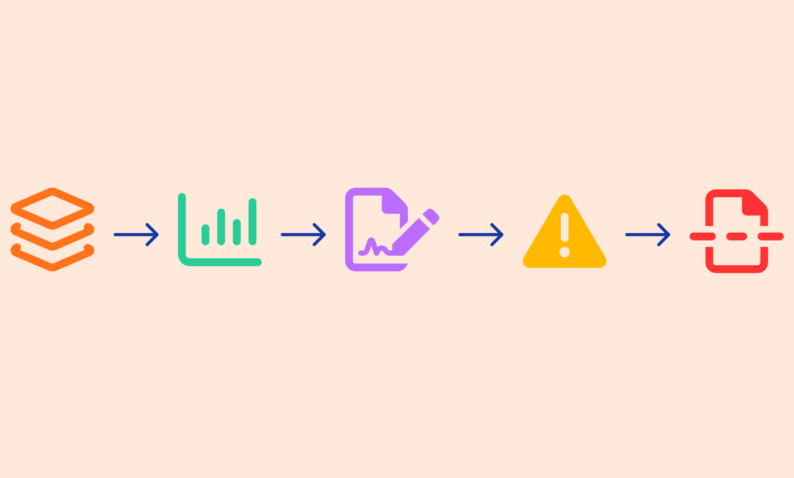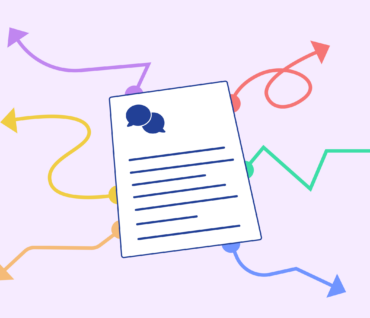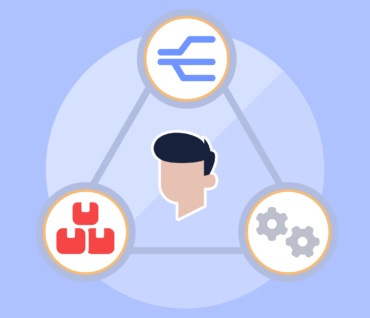
Get Started
Graphite's supplier management tool helps you onboard faster, cut time on risk reviews and streamline supplier validations. Save time and money.
February 14 2023
The 5 Stages of Effective Supplier Lifecycle Management Process
Your organization’s success depends on suppliers for the timely delivery of goods and services. To get the most out of these supplier relationships, you must practice effective supplier lifecycle management. Not an easy task, is it? By understanding each stage in the vendor lifecycle and having a standard supplier lifecycle management process in place to manage it, your organization can build a lasting, mutually beneficial relationship while reducing your risk and costs, too.
What Is Vendor or Supplier Lifecycle Management?
The goal of effective Supplier Lifecycle Management (SLM) is for both you and your supplier to gain maximum value from the partnership. This end-to-end approach will help you better manage suppliers in a transparent, organized, and integrated way. Here is a brief summary of the five stages in the supplier lifecycle management process:
1. Segmentation
You likely depend on several vendors—some are long-term partners, while others might only work with you a few times. Being able to segment them based on their potential impact on your business is the first step in an effective vendor lifecycle management process and proper nurturing of your supplier relationships.
Segmentation is the process of classifying suppliers into distinct groups so you can determine the level of attention needed and then dedicate the right resources to the working relationship. In other words, where does this supplier fit in? How important are the supplier to your supply chain? What type of supplier risk is introduced? Proper supplier segmentation is the first step to effective supplier management.
Key Supplier Classifications
Suppliers can generally be grouped into the following tiers:
Strategic suppliers—These partners are critical to your business functioning and meeting its core objectives. This level goes beyond cost-savings and adds value to your business over the long term. Strategic suppliers are the most difficult to replace.
Operational suppliers—Although not as critical to your organization functioning, these core suppliers are required to sustain daily production or business needs, but there are alternatives. Examples include project management tools or talent acquisition firms. If these suppliers were to go out of business, it would likely be inconvenient for you, but you wouldn’t need to panic.
Transactional suppliers—These suppliers deal with short-term needs or one-off procurement of goods or services. Generally, you have plenty of different procurement options with limited impact on your supply chain. For instance, a transactional supplier may be someone you use for a one-time engagement, like an event venue.
Emerging suppliers—Suppliers who have the potential to critically impact your business but are in a pilot or testing period may fit best into this tier as they wait to move to a more permanent segment.
Keep in mind there is no single preferred approach to vendor segmentation—choose the one that best fits your business.
2. Contract Management
Too often, supplier contracts fall through the cracks because they’re filed away in drawers or indexed and forgotten on a spreadsheet. If there’s no system for proper contract management, it’s likely that no one is aware of when a contract is expiring. Or an evergreen contract may automatically renew when your organization wanted to renegotiate or stop doing business altogether with that supplier.
That’s why it’s ideal to ensure that a central location for securely storing your contracts and supplier information is a key component of your supplier management process. For one, having an online database for managing contracts and other important documents offers stakeholders from legal to procurement complete visibility of supplier performance and compliance.
And you’ll know exactly when a contract is up for renewal so you can renegotiate or terminate as needed. Plus, your organization will be able to more easily identify business-critical external suppliers, ensure the necessary certifications are in place, and that KPIs agreed upon at the start of the contract are being met.
3. Performance Management
Performance management involves analyzing and measuring a supplier’s performance throughout the contract period to spot weaknesses and curb risks. Once you’ve been working with a supplier long enough and have enough data, you’ll want to meet with them every quarter to ensure everything is running smoothly.
Quarterly check-ins will help to ensure your suppliers are meeting Key Performance Indicators (KPIs) as outlined in the contract and Statement of Work (SOW).
4. Risk Management
It’s essential to be able to actively monitor new and existing suppliers and have a contingency plan in place to prevent supply chain backlashes. Supplier risk management is the process of ongoing monitoring, analyzing, and mitigating risks in your organization’s supplier base and supply chains. We recommend that as you begin working with new suppliers, you define the risk.
It’s important to understand that if you’re willing to sever a supplier relationship based on whatever risk topics you monitor, ensure those are included in the initial supplier contract. The contract will be difficult to break if you didn’t specify those risks upfront.
In addition, ongoing communication amongst your business units is important, so everyone is on the same page and understands the implications of terminating a supplier relationship. Before taking action, ensure you have all stakeholders in the room for that conversation.
5. Supplier Offboarding
You run a report and see your company hasn’t used a particular supplier in two years. It’s time to deactivate the account After all, severance is as much a part of the proper supplier lifecycle management process as relationship nurturing is. Supplier offboarding removes access to your systems, data, and infrastructure when terminating a supplier contract.
Yet today, many companies don’t offboard suppliers with whom they no longer engage. But this makes your company vulnerable by leaving terminated suppliers with access to sensitive information that can result in data breaches, compliance violations, and more.
By creating a documented vendor lifecycle management process that you can apply uniformly across your business, you ensure that suppliers you no longer use are properly offboarded. Use this supplier offboarding checklist to help you take the right steps to secure and close the relationship.
What Is Vendor or Supplier Lifecycle Management Software?
Supplier lifecycle management software or supplier relationship management software is a set of tools to help you establish and maintain mutually beneficial relationships with your third-party suppliers. The ideal software speeds up supplier onboarding, streamlines communications, tracks supplier performance, and manages supplier risk.
Consider supplier lifecycle management software with the following key features:
- Central repository to securely store important documents and supplier data.
- Self-service portal where external suppliers can input and update their own information.
- Supplier performance tracking and automated risk management.
- Integration with your existing ERP and P2P systems.
Choose the Best Supplier Lifecycle Management Software
Each company has unique needs. That’s why it’s important to first carefully identify your specific requirements to determine the ideal supplier lifecycle management solution for your procurement organization.
Look for a supplier lifecycle management solution that will help you:
Accelerate supplier onboarding:
Shorten supplier response times, quickly evaluate supplier risk, and seamlessly sync data to your ERP with Graphite.
Automate supplier validation:
With Graphite’s automated supplier validation, you can skip the back-and-forth emails and cut the time spent each year on validations by hundreds of hours.
Enhance project collaboration:
Graphite makes it easy to coordinate with internal stakeholders on assigned tasks, follow up with vendors on pending actions, and stay synced with InfoSec and Data Privacy teams to keep your procurement projects running smoothly.
Increase managed spend:
With Graphite, create custom workflows in an easy-to-navigate purchasing process to guide requesters to the right channel every time.
Manage supplier risk:
Automatically score supplier profiles, trigger pre-built risk remediation workflows, and monitor suppliers to prevent and resolve risk with Graphite.
Prevent bank fraud:
With automated supplier data validation, two-factor authentication, and dual authorization, Graphite protects your company from fraudulent banking information entering your payment systems.
Proper Vendor Management & Lifecycle Monitoring Means Multiple Benefits
When you take the time to understand each stage in your supplier lifecycle and create a standard process to manage each phase in your strategic sourcing process, not only will you build stronger relationships with your key suppliers, but you’ll also mitigate risk and reduce costs.
Read the Full Ebook
Ready to learn more about the supplier lifecycle and best practices for effective supplier performance and supplier relationship management? Learn how Graphite can help.
Read More



